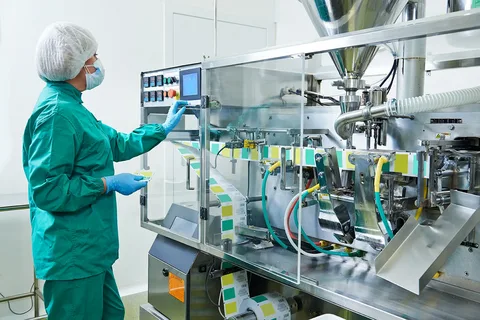Effective QA and QC can help ensure that your company produces high-quality products. This helps you avoid costly recalls, rework, and other expenses associated with product defects.
Additionally, it can help you improve operational efficiency by optimizing production processes. This can increase productivity and boost your company’s competitiveness in the international market.
Regulatory Compliance
Regulatory compliance is a key component of quality control. Companies need to be able to ensure that their products adhere to government regulations and safety standards. This can be especially important for businesses that sell consumer goods, such as food or pharmaceuticals. In these cases, it’s crucial that the company’s QC processes can detect any problems with the product and correct them before they go to market.
Depending on the industry, a company’s QC process may include several methods. For example, some organizations use Six Sigma, a method that reduces defects and variance from set specifications. This approach is data-driven and uses a combination of data analysis and problem-solving techniques to create a continuous improvement cycle.
Other QC strategies involve testing and inspection of raw materials and production components. For example, a pharmaceutical manufacturer might test samples of raw ingredients and finished drugs to make sure they comply with FDA guidelines. Similarly, a food manufacturing company might test for nutritional content and contaminant levels. In some cases, a QA or QC department might work with an outside lab to complete these tests.
It’s also important to ensure that employees follow strict internal protocols when performing quality control activities. This can help ensure that the process is efficient and effective. Some companies use software to manage this process, which helps them track employee performance and maintain consistency in quality procedures.
Quality control can help a business achieve a number of benefits, including lower production costs and greater customer satisfaction. Moreover, quality control can improve a business’s reputation and overall goodwill. It’s also possible to increase employee morale by producing high-quality products that exceed customers’ expectations.
Companies should also implement a centralized quality management system that streamlines the process of maintaining and improving standards. This will help them better identify any deficiencies in their processes and eliminate wasteful practices. In addition, companies should use digital recordkeeping to avoid paper-based documentation and save time. This will also allow them to easily analyze data and improve their processes as needed. Finally, it’s important to regularly perform QA and QC audits to identify any areas where improvements are needed.
Product Safety
As a pharmaceutical company, your ultimate goal is to create a medication that keeps people safe. The right drugs can save lives, prevent illness, and improve the quality of life for the masses. Creating these life-saving medications takes the utmost care and attention to detail. In order to achieve this, strict manufacturing standards must be in place. The same holds true for the quality assurance process. The quality of a drug depends on the accuracy of each step in its creation. If one aspect of the production process is not up to standard, it could lead to a serious medical issue. That’s why every pharmaceutical manufacturer should incorporate quality control into each of its processes.
This includes ensuring that the product meets specifications and is free of defects. QC also involves maintaining detailed records and documentation to support the testing and inspection process. Finally, it includes training employees and fostering a culture of continuous improvement.
Pharmaceutical manufacturers must follow the guidelines the FDA (Food and Drug Administration) set to create and distribute drugs. These guidelines include specifications for the testing, manufacturing, packaging, labeling, and storing of pharmaceuticals. In addition, each company must have an internal auditing program and management review process in order to demonstrate compliance with all applicable regulations.
Drug safety is a major concern in the pharmaceutical industry, and a company that fails to meet the proper quality controls could be subjected to lawsuits or government sanctions. Having stringent quality assurance and control measures in place can help companies avoid these issues and keep their reputations intact.
In addition to the regulatory compliance requirements set by the FDA, pharmaceutical companies must adhere to good manufacturing practices (GMPs). GMPs require written procedures for calibration, maintenance, and qualification of equipment used during the manufacture of drug products. Using an equipment management software solution like SimplerQMS can ensure that all pharmaceutical manufacturing equipment is up-to-date and functioning properly.
The bottom line is that a quality control system can help a company maintain its reputation, increase customer loyalty, and foster competitive advantage in the marketplace. A quality control system can reduce operational costs and create a positive business environment by reducing risk, eliminating errors, and minimizing waste.
Product Reputation
Rigorous QC and QA strategies ensure that your company’s products meet and exceed regulatory standards. They also help foster a positive work environment, make regulatory inspections less stressful, and improve your firm’s reputation for quality. This, in turn, enhances customer satisfaction and loyalty.
Moreover, rigorous inspections and testing of raw materials, intermediate components, and final products can help mitigate risk and ensure product safety. This helps you build a strong brand image and maintain international competitiveness. Additionally, QC can identify defects and potential issues before they occur, thereby helping you avoid costly repairs, replacements, and recalls.
In the life sciences industry, QA is a set of processes that ensures that a product conforms to predefined quality requirements. These processes can include documenting standard operating procedures, supplier management, training, and change control. They can also include inspections, auditing, and review of the process and product.
Quality assurance is a proactive activity that aims to prevent quality issues by design, while quality control is a reactive activity that detects issues after they happen. The difference between the two is illustrated in this infographic:
Quality assurance is a proactive activity that focuses on processes and aims to prevent quality issues before they occur, while quality control is a reactive activity. The process of quality assurance is often more involved than the process of quality control. For example, a quality assurance team would likely oversee the development and maintenance of a new drug or medical device, while a quality control team would focus on testing the final result. A quality assurance team may be responsible for a wide range of tasks, including designing, monitoring, and improving the production process, while a quality control team may be responsible for sampling products, inspecting batch records, and implementing a variety of other quality control measures. Generally, QA involves all employees in a life sciences organization, while QC is typically the responsibility of a specific team that follows standardized procedures for product testing. This helps limit room for error and ensures that all members of the team have the necessary knowledge and skills to perform their job duties.
Customer Satisfaction
QA and QC are essential for many industries but are especially crucial in highly regulated industries like pharmaceuticals. By following these quality assurance processes, companies can avoid costly recalls and ensure that their products meet strict regulatory standards. Ultimately, this helps them maintain a solid reputation and compete in the global marketplace.
However, despite being closely related, there are some key differences between the two processes. QA is a more proactive process that helps prevent defects by setting up a system that consistently produces a quality product. Conversely, QC is more reactive and focuses on inspecting products and services after they’ve been produced.
The QC process is used to identify and correct problems, which can include things such as missing components or incorrect dimensions. It can also involve evaluating the final product to make sure it meets the desired specifications. In addition, QC can help to reduce costs by improving operational efficiency and reducing waste.
While QA and QC are essential for companies of all sizes, they have different organizational roles. QA is a managerial tool focusing on the process and how to make it more effective, while QC is an operational tool involving inspections of finished products. Ultimately, understanding the differences between these two processes can help to improve the company’s overall quality.
In addition to meeting regulatory requirements, QC can also help to increase customer satisfaction and loyalty. Satisfied customers are more likely to be loyal to a brand, which can lead to long-term business success. In addition, QC can also help to reduce risks and enhance international competitiveness by ensuring that all products meet high standards. This makes it a vital part of any quality management system, regardless of industry.











